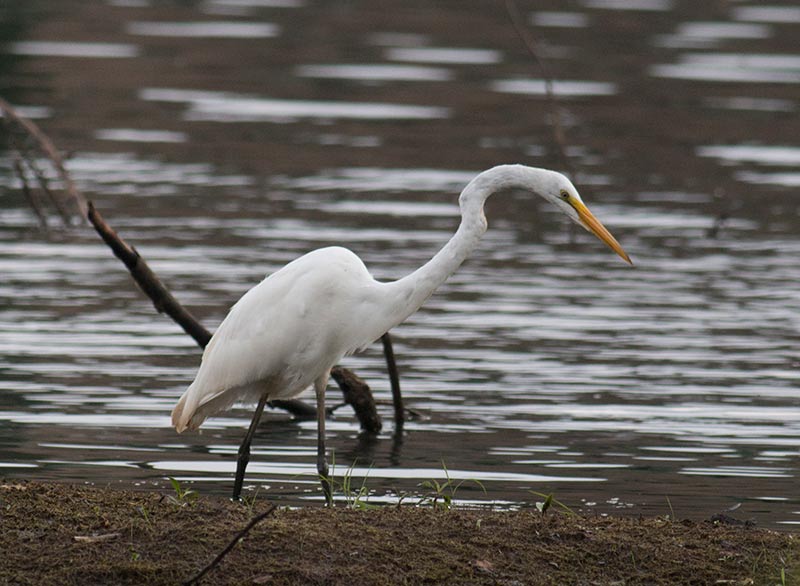Water Birds
8/21/16
By David Brown
The hot August weather has a lot of people swimming in creeks and boating on the river. Birders are also visiting these areas because the low water level exposes habitat for waders, shorebirds, and other water birds.
The great blue heron is one of our most common wading birds. This species appears more gray than blue and has a six foot wingspan. They are found in the local area year-round but are less common in the winter.
The green heron is much smaller with a wingspan of slightly more than two feet. They can be found locally from mid-April through September but spend the winter in Florida, Central America and northern South America.

Green Heron
The great egret is an uncommon species in Lycoming County and is only reliably found during the post-breeding dispersal period of late summer. This species is completely white except for a large bright yellow beak and black legs. It is smaller than the great blue heron but still comes across as a large bird. Other species of waders such as little blue heron and snowy egret are rare vagrants to watch for.

Great Egret
August thunderstorms often knock down migrating shorebirds which can then be found along sandy stream banks. On August 8th two friends and I found four lesser yellowlegs and a semipalmated sandpiper near the mouth of Loyalsock Creek. Last August a rare willet was found in the same area. Last September a black-bellied plover was found near the Williamsport dam. Killdeer and spotted sandpipers are two species that nest locally and continue to be found along water in August. Muddy puddles on farm fields often attract shorebirds as well. Shorebirds are not well documented in Lycoming County because there are no known hot spots that attract large numbers, so birders are left checking small portions of shoreline, hoping to find small flocks.
Rainstorms can also knock down migrating terns. On August 10th my family and I saw a Forster's tern near the Mill Street boat launch in Montoursville after a storm. Another species to watch for is the much larger Caspian tern.
Mallards and wood ducks are very drab looking this time of year as males are in “eclipse” plumage. This helps camouflage them as they go through a temporary flightless stage while replacing their wing feathers. Common mergansers are done nesting and will continue in the area through the winter. A female red-breasted merganser has spent the summer near the Williamsport dam which is an unusual occurrence because we are well south of their typical Canadian summer range.
Our local bald eagles continue to be seen, including the juveniles that were born this summer. Hundreds of migrating bald eagles are seen each fall at local hawk watching sites such as the overlook on Route 15 near South Williamsport. Ospreys are also seen from August through October as they migrate south. Watch along water for both species as they dive for fish.
Watch for these water birds and others as you enjoy our local creeks and river this summer and fall.